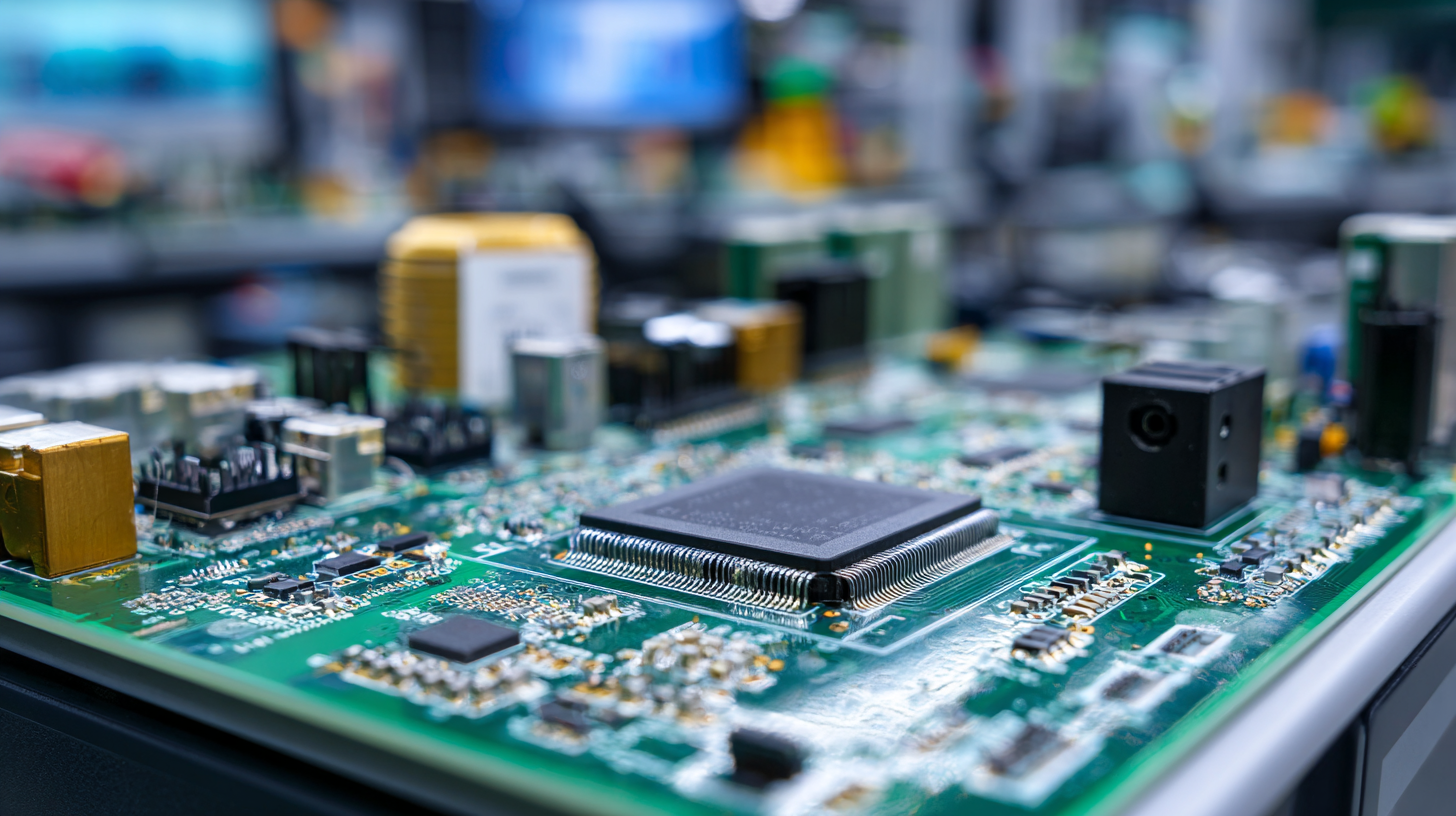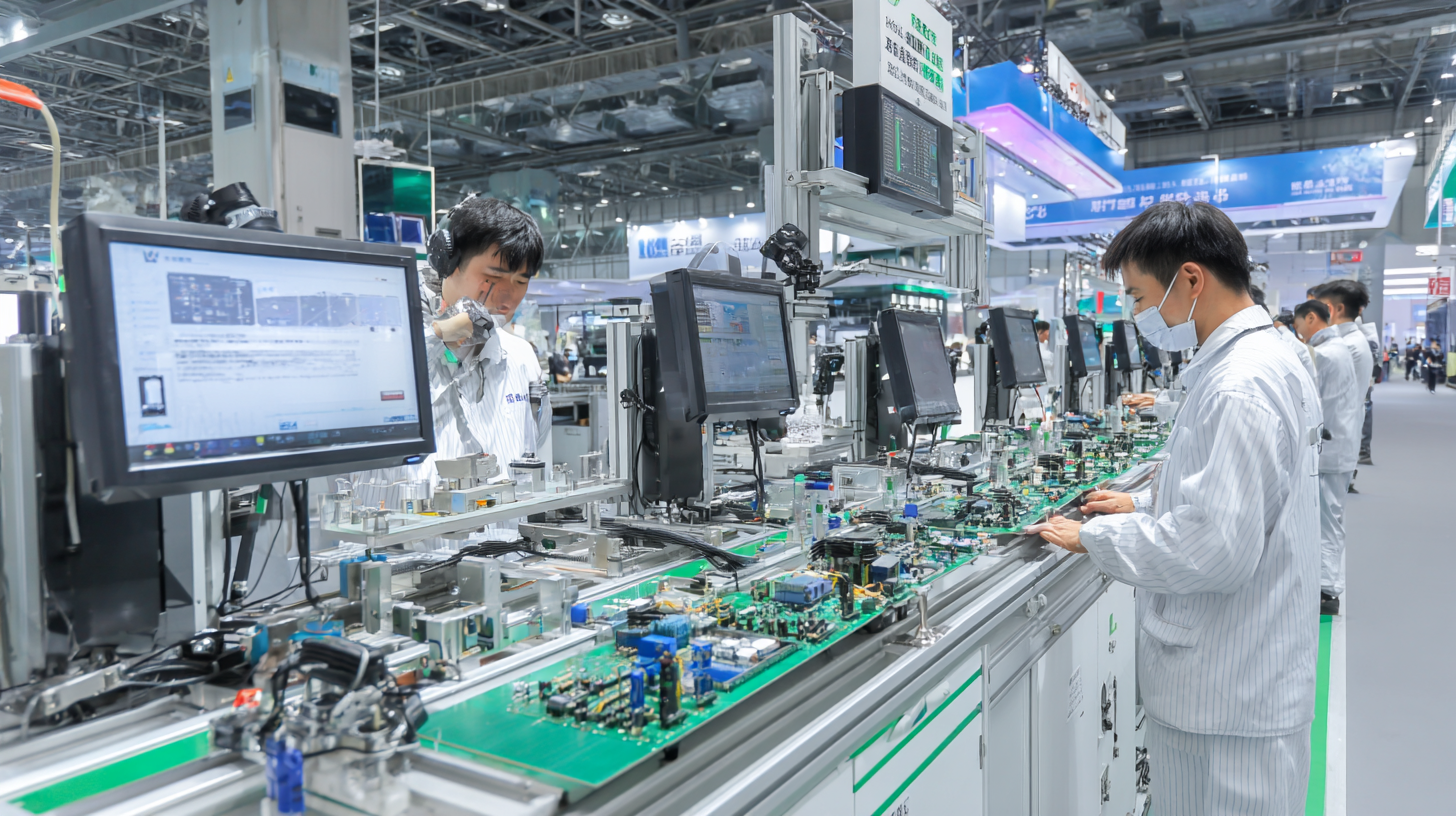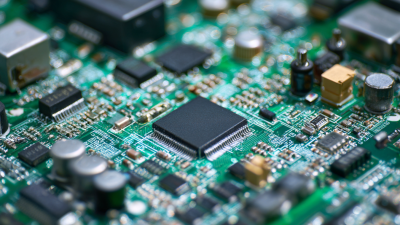WORLD electronics offers a complete line of electronic circuit board manufacturing and assembly services, as well as advanced manufacturing services. Our commitment to quality and service is second to no supplier.
Learn MoreOur team of engineers assists you in the development of new designs to optimize quality manufacturability (DFM) and testability, resulting in cost minimization and reduced product development time.
Learn MoreOur flexible manufacturing floor layout and highly trained staff allow for Quick Set-up and Tear Down of small volume prototype runs. This combination grants our customers the benefit of turning new designs quickly and accurately.
Learn MoreWORLD electronics is dedicated to quality. This quality is what underpins our commitment to thorough testing. Our engineers can develop a set of tests that ensure reliability and high performance in all products.
Learn MoreSupply chain management has crossed over from being a narrow management function to being a key operational function.
Learn MoreThe rapid evolution of technology has significantly impacted the electronics industry, particularly in the realm of printed board assembly (PBA). As the demand for more sophisticated electronic devices continues to rise, the global printed circuit board (PCB) market is projected to reach approximately $82.4 billion by 2026, growing at a CAGR of 3.7% from 2021. The upcoming 2025 China Import and Export Fair presents a vital platform for industry stakeholders to explore the latest trends and innovations in PBA, reflecting the sector's resilience and growth potential. With China's PCB production expected to account for over 50% of the global output, this event serves as an essential nexus for manufacturers, suppliers, and consumers to connect and collaborate on advancements that drive efficiency and sustainability in printed board assembly processes.

The current market landscape of printed board assembly (PBA) in 2025 reflects significant advancements driven by technological innovation and shifting consumer demands. As industries increasingly emphasize miniaturization and efficiency, manufacturers are adapting their production processes to incorporate automated technologies and artificial intelligence. This evolution not only enhances productivity but also ensures superior quality control. Consequently, businesses are poised to meet the rising demand for compact and sophisticated electronic devices across multiple sectors, including telecommunications, automotive, and consumer electronics.
In addition to automation, sustainability has emerged as a key focus in the PBA market. Manufacturers are increasingly prioritizing eco-friendly materials and processes to minimize environmental impact. As regulatory pressures mount and consumers become more environmentally conscious, the adoption of green practices is not just a trend but a necessity. The insights gathered from the 2025 China Import and Export Fair will offer valuable projections on how these trends will shape the future of the industry, helping stakeholders navigate the complexities of a rapidly evolving marketplace.

The upcoming 2025 China Import and Export Fair is poised to spotlight significant innovations in printed board assembly, driving industry growth. One of the most noteworthy trends is the integration of advanced automation technologies. According to a recent industry report by Markets and Markets, the global electronics manufacturing services market is expected to reach $1 trillion by 2025, fueled by automation that enhances efficiency and reduces production costs. As companies pivot towards smart manufacturing solutions, innovations such as AI-driven quality control systems and robotics are becoming essential elements of printed board assembly processes.
Additionally, the adoption of eco-friendly materials is making waves in the industry. The rise of sustainable practices, as highlighted in a report by Technavio, indicates a 20% increase in demand for environmentally friendly PCBs by 2025. Manufacturers are innovating in the use of biodegradable components and lead-free soldering materials, which not only comply with global regulations but also meet consumer preferences for green products.
Tip: Consider attending workshops at the fair that focus on sustainable practices in printed board assembly. Networking with industry leaders and discovering new sustainable innovations can provide insights that could be beneficial for your business strategy.
As the fair approaches, it is crucial to stay informed about these key innovations that are set to reshape the landscape of printed board assembly, positioning companies for future growth in a competitive marketplace.
The growing demand for smart electronics is significantly influencing trends in printed board assembly (PBA), as highlighted by the upcoming 2025 China Import and Export Fair. As the PBA sector continues to evolve, the shift towards integrating advanced technologies such as AI and IoT devices is evident. This transformation not only enhances the complexity of the assembly process but also necessitates a robust infrastructure that can support high-volume production of smart electronics.
In the OEM electronics assembly market, the segmentation by type and application reveals a clear direction towards specialized solutions. The hardware segment remains dominant, driven by increased applications in automotive, communication, and consumer electronics. However, the software component is gaining traction, particularly in enhancing operational efficiencies and reducing time-to-market for innovative electronic products. Regional analysis indicates that Asia-Pacific, with its established manufacturing base, will continue to lead, while emerging markets are also poised for growth as they adapt to the evolving technological landscape. The insights from industry reports emphasize that understanding these trends is crucial for stakeholders aiming to leverage the opportunities presented by the smart electronics revolution in PBA.

As the 2025 China Import and Export Fair approaches, the focus on sustainability within the printed board assembly industry is more crucial than ever. With increasing environmental concerns, both manufacturers and consumers are seeking greener alternatives that reduce waste and improve energy efficiency. The trend towards eco-friendly materials and processes not only aligns with global sustainability goals but also enhances brand value in a competitive market.
Tips for companies looking to embrace sustainability in printed board assembly include investing in renewable energy sources for production and adopting advanced recycling techniques for electronic waste. Minimized use of harmful substances like lead and brominated flame retardants can significantly lessen environmental impact. As consumers become more aware of their purchasing choices, offering products that highlight sustainable practices can also cater to their preferences and enhance customer loyalty.
Another vital aspect is the incorporation of life cycle assessments to evaluate the environmental impact at every stage of production. Companies should also consider collaborating with suppliers who prioritize sustainable practices. By aligning with sustainable trends, the printed board assembly industry can not only meet consumer demands but also contribute positively to the planet's health, ensuring a more responsible and profitable future.
The 2025 China Import and Export Fair will play a crucial role in shaping the dynamics of the global PCB industry, especially in light of the ongoing trade tensions exacerbated by US tariffs. Taiwanese businesses, being heavily reliant on the US market, face significant challenges due to the reciprocal tariffs imposed by the US government. This situation compels Taiwanese manufacturers to adapt their strategies, either by seeking alternative markets or enhancing operational efficiencies to mitigate the impact of these tariffs. The delicate balance of navigating these trade barriers while seizing opportunities for growth will be essential for maintaining competitiveness in an increasingly fragmented supply chain.
Meanwhile, the global semiconductor industry anticipates a thriving 2025 driven by trends such as generative AI and data center expansion. However, the interplay of tariffs and international trade agreements complicates this outlook. While the US-China trade deal temporarily reduces tariffs, it introduces complexities for countries like India, which are vying for a more influential role in global trade negotiations. The implications of these tariffs on the semiconductor industry are particularly pronounced, affecting electronics assembly and the overall supply chain landscape. As firms look to innovate and expand, understanding the economic impact of these tariffs will be vital for adapting to the global market shifts that will be highlighted during the fair.
| Year | PCB Production Volume (Million Units) | Market Growth Rate (%) | Export Value (Billion USD) | Import Value (Billion USD) |
|---|---|---|---|---|
| 2022 | 1500 | 5.5 | 20.5 | 15.0 |
| 2023 | 1600 | 6.0 | 22.0 | 16.5 |
| 2024 | 1700 | 6.5 | 24.0 | 18.0 |
| 2025 | 1800 | 7.0 | 26.5 | 20.0 |





